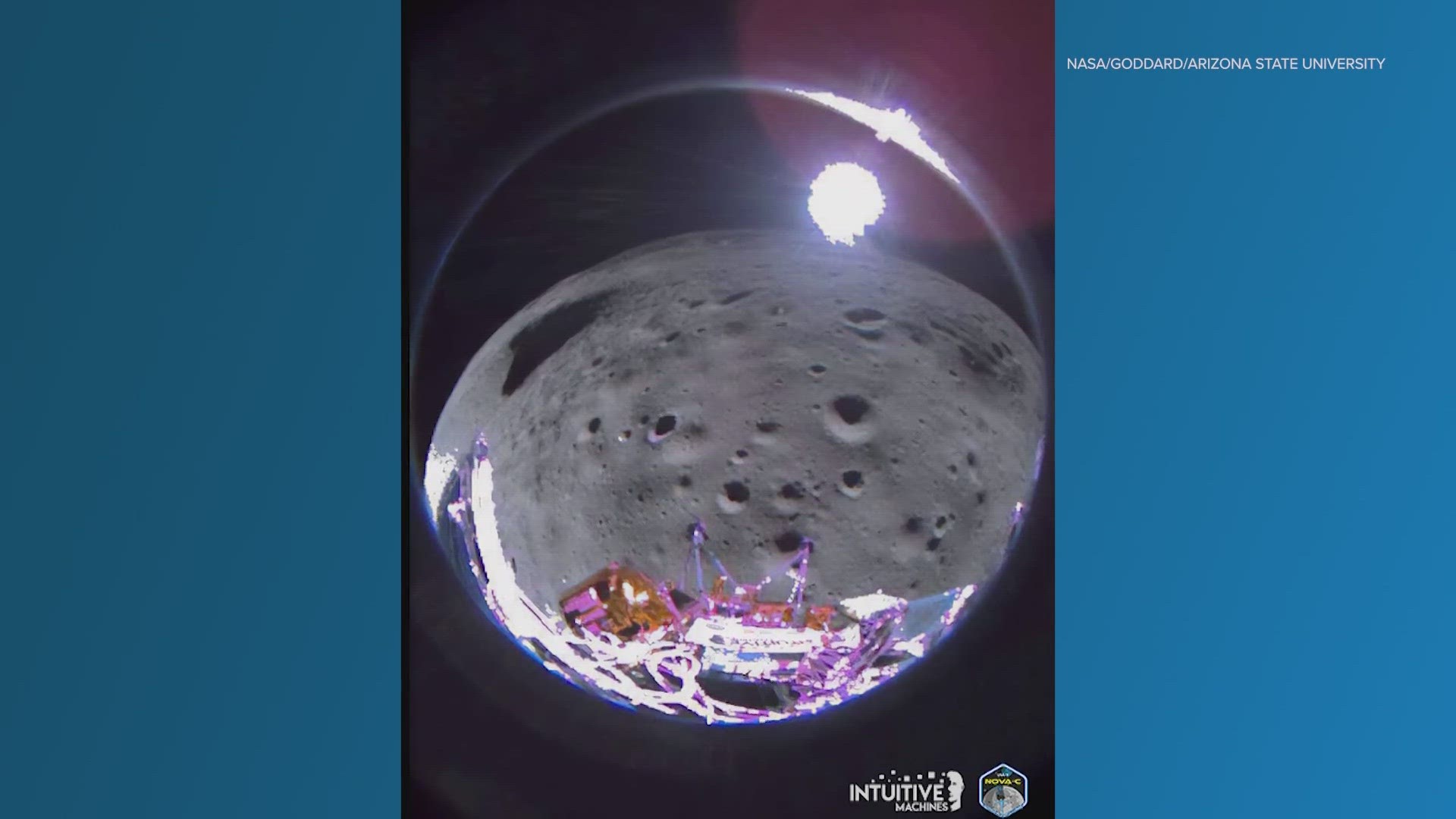HOUSTON — A moon lander that ended up on its side managed to beam back more pictures, with only hours remaining before it dies.
Intuitive Machines, a Houston-based aerospace company, posted new photos of the moon’s unexplored south polar region Tuesday.
The company's lander, Odysseus, captured the shots last Thursday shortly before making the first U.S. touchdown on the moon in more than 50 years. Odysseus landed on its side, hampering communication and power generation.
Once sunlight can no longer reach the lander’s solar panels, operations will end. Intuitive Machines expects that to happen sometime between Tuesday afternoon and early Wednesday. The mission, part of NASA's effort to boost the lunar economy, was supposed to last until at least Thursday when lunar nighttime sets in. NASA has six experiments on board.
Intuitive Machines is the first private business to land a spacecraft on the moon without crashing. Another U.S. company launched its own lunar lander last month, but a fuel leak doomed the mission and the craft came crashing back to Earth.
Intuitive Machines was founded in 2013 by Stephen Altemus, Kam Ghaffarian and Tim Crain. It started as a think tank and progressed into a company constructed to provide reliable and safe autonomous system solutions.
“We’re doing that by straying away from and sailing offshore from what is known and what is safe into the unknown and trying to solve those engineering issues,” Altemus told KHOU 11 in 2019. “Going right to the brink before failure. That’s what’s different about this company.”
Intuitive Machines' private lander is part of a NASA program to kickstart the lunar economy. The space agency is paying $118 million to get its experiments on the moon on this mission.
Only five countries — the U.S., Russia, China, India and Japan — have scored a lunar landing and no private business has yet done so. The U.S. has not returned to the moon's surface since the Apollo program ended more than five decades ago.
The Associated Press Health and Science Department receives support from the Howard Hughes Medical Institute’s Science and Educational Media Group. The AP is solely responsible for all content.

